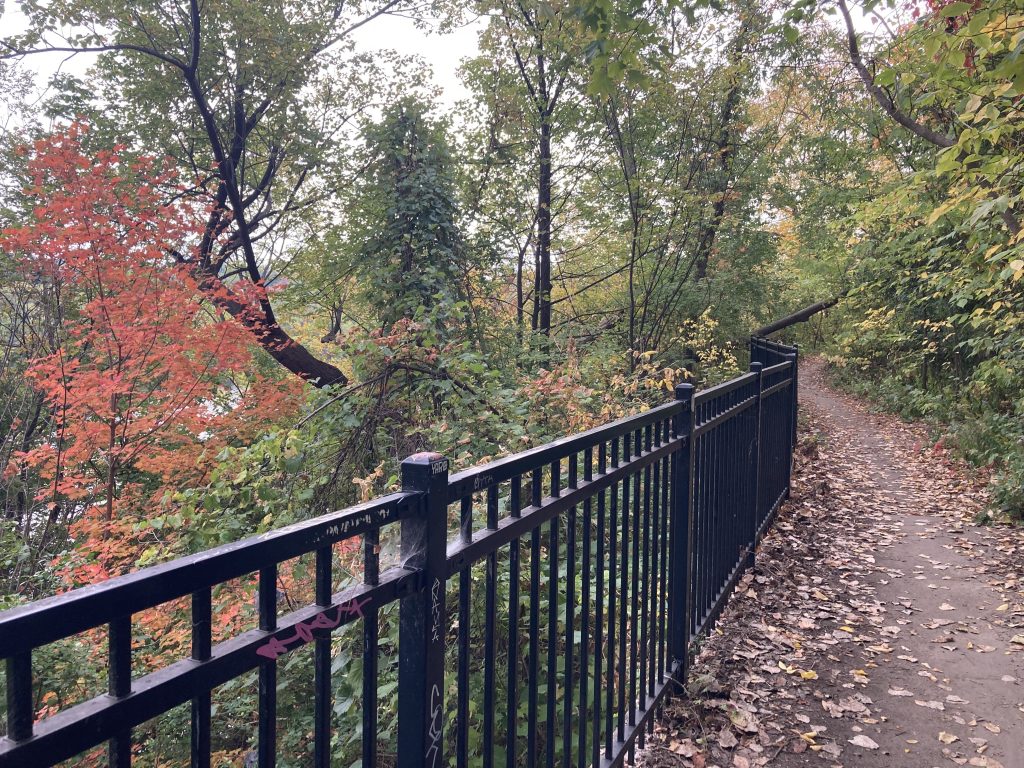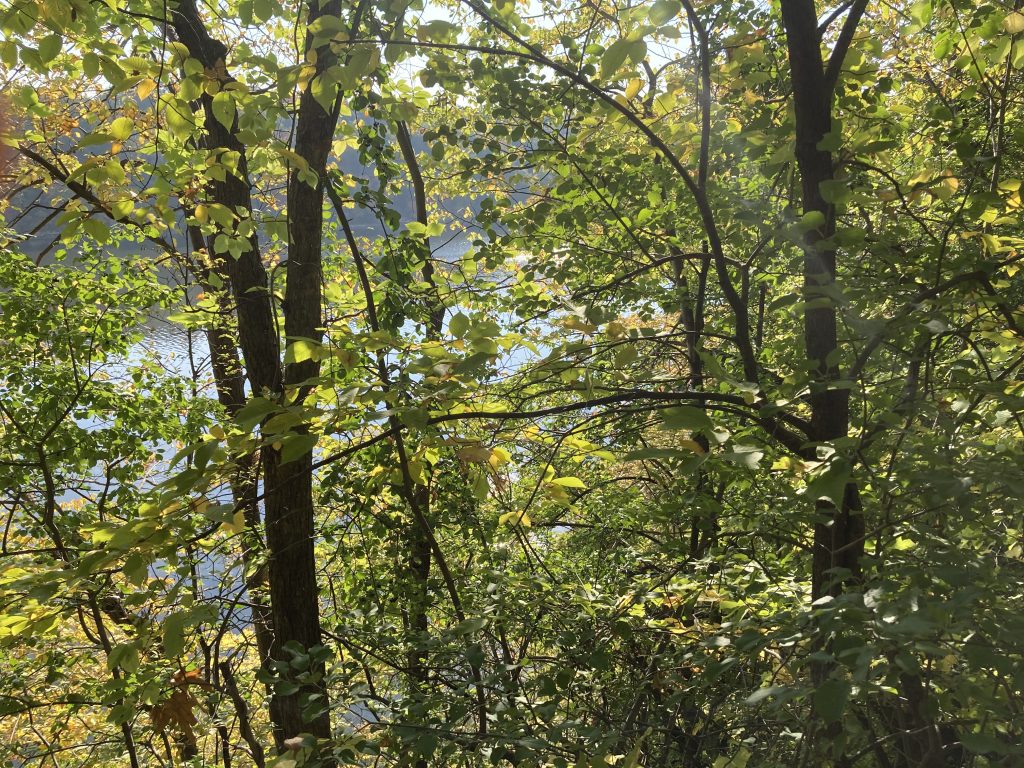5 miles
bottom of franklin hill
26 degrees
Hooray for being outside and on the walking trail! Hooray for not much wind! Hooray for running up the Franklin hill! My back was a little tight, but not too bad. My legs felt fine.
The river was open; the only ice was on the edges. The sky was a mix of clouds and bright sun. Before the run I heard some geese — did I hear any during? I don’t think so. Also heard before the run: some kids having fun inside a house — laughing and yelling through the closed windows.
At some point, I had an idea for my monthly challenge: the run as ceremony. Inspired by Ellis’s Aster of Ceremonies, I want to return to Gary Snyder, Mount Tamalpais, and circumambulation. What sort of ceremonies can I make out of my run that brings together my blind spot and the gorge?
10 Things
- bright pink graffiti on a foot of the 1-94 bridge
- the top of one section of the wooden fence on the edge above Longfellow Flats is missing
- the chain across the old stone steps has been removed
- the path was almost completely clear — the only bit of snow I recall seeing was under the lake street bridge: a low and narrow ridge — just remembered one other bit of snow: just past the franklin bridge
- a full-length mirror left by the trashcan
- disembodied voices — coming from inside houses, below in the gorge, far behind me on the trail
- sh sh sh — my feet striking the grit on the asphalt
- my shadow briefly appeared – not sharp but soft, faint
- at least 2 trios of runners, some pairs, several runners on their own
- my friend, the limestone slabs propped up and looking like a person sitting against the underside of Franklin, is still there. I’d like to name them and add them to my list of regulars: Lenny the limestone?
lower back pain
My lower back has been sore lately. Sore enough that I took 5 days off of running. Not sure why I’ve waiting this long, but i decided today to look up lower back stretches for runners. I found this video and its 4 helpful stretches — the video claims to have 5 stretches, but they are only 4. I wonder what the missing one was?
The stretches: pretzel, thread the needle, plank to lunge, hip sweep
I’ll see how it feels in a few hours, but right now, having just stretched, it feels good!
a purple spill from march 1
I wrote this yesterday, but didn’t have a chance to post it.
It’s March and the purple hour is over, but in true purple fashion, the color can’t be contained to one month. Always it oversteps its boundaries. Reading the poem of the day, “Fog” by Emma Lazarus, purple appeared:
Swift, snowy-breasted sandbirds twittering glance
Through crystal air. On the horizon’s marge,
Like a huge purple wraith,
The dusky fog retreats.
wraith
1
a: the exact likeness of a living person seen usually just before death as an apparitionb: GHOST, SPECTER
2
: an insubstantial form or semblance : SHADOW
3
: a barely visible gaseous or vaporous column
f you see your own double, you’re in trouble, at least if you believe old superstitions. The belief that a ghostly twin’s appearance portends death is one common to many cultures. In German folklore, such an apparition is called a Doppelgänger (literally, “double goer”); in Scottish lore, they are wraiths. The exact origin of the word wraith is misty, however, and etymologists can only trace it back to the early 16th century—in particular to a 1513 translation of Virgil’s Aeneid by Gavin Douglas (the Scotsman used wraith to name apparitions of both the dead and the living). In current English, wraith has taken on additional, less spooky, meanings; it now often suggests a shadowy—but not necessarily scary—lack of substance.
Merriam-Webster entry
marge = margin = edge
Wraith — I like that word and what it conjures. And to make it purple? Good job, Emma! I’m not sure about the middle section where she imagines the “orient town,” but I like “Fog,” especially this:
for on the rim of the globed world
I seem to stand and stare at nothingness.
But songs of unseen birds
And tranquil roll of waves
Bring sweet assurance of continuous life
Beyond this silvery cloud. Fantastic dreams,
Of tissue subtler still
Than the wreathed fog, arise,
And cheat my brain with airy vanishings
And mystic glories of the world beyond.
Returning to the purple — I like how she imagines the lifting fog as purple. Back in November of 2022 (how has it been that long?!) when I studied gray, I devoted a day to fog and mist: 23 nov 2022. Last month, purple — especially lavender and lilac or eggplant and dark purple — replaced gray. Where I used to see gray everywhere, now I see purple, or imagine purple.

